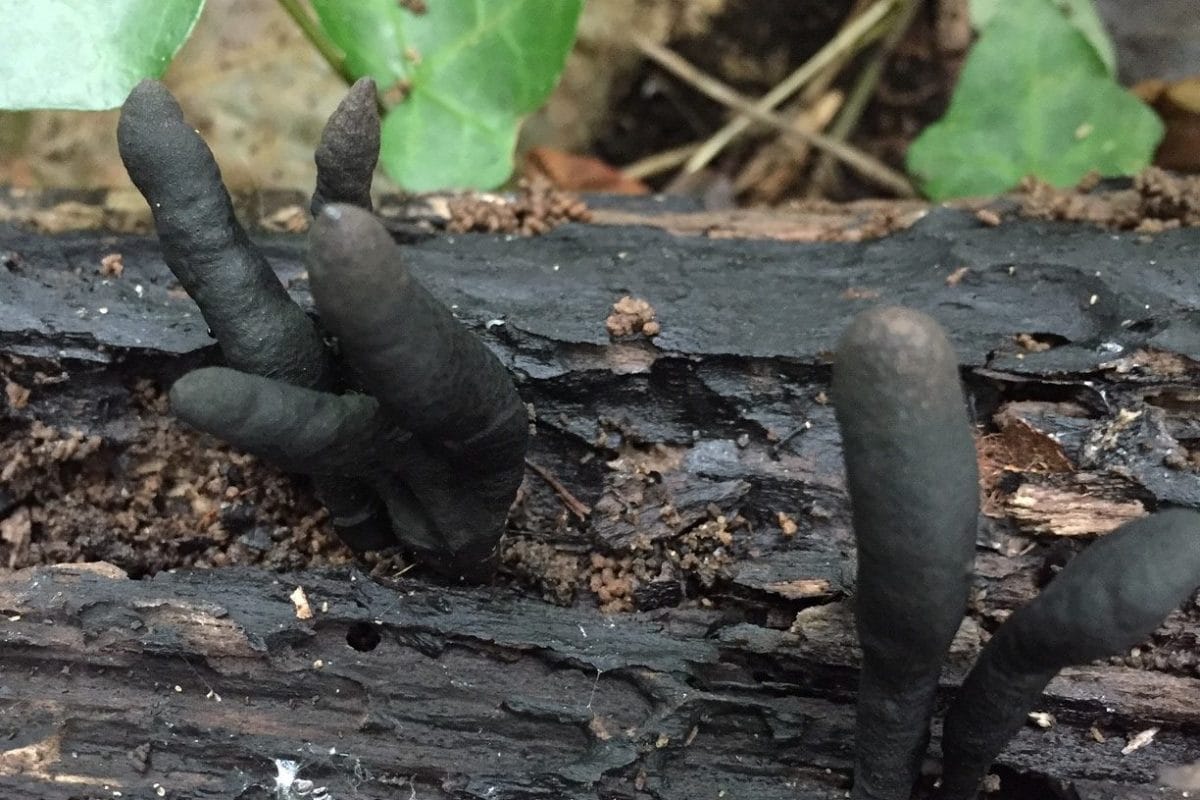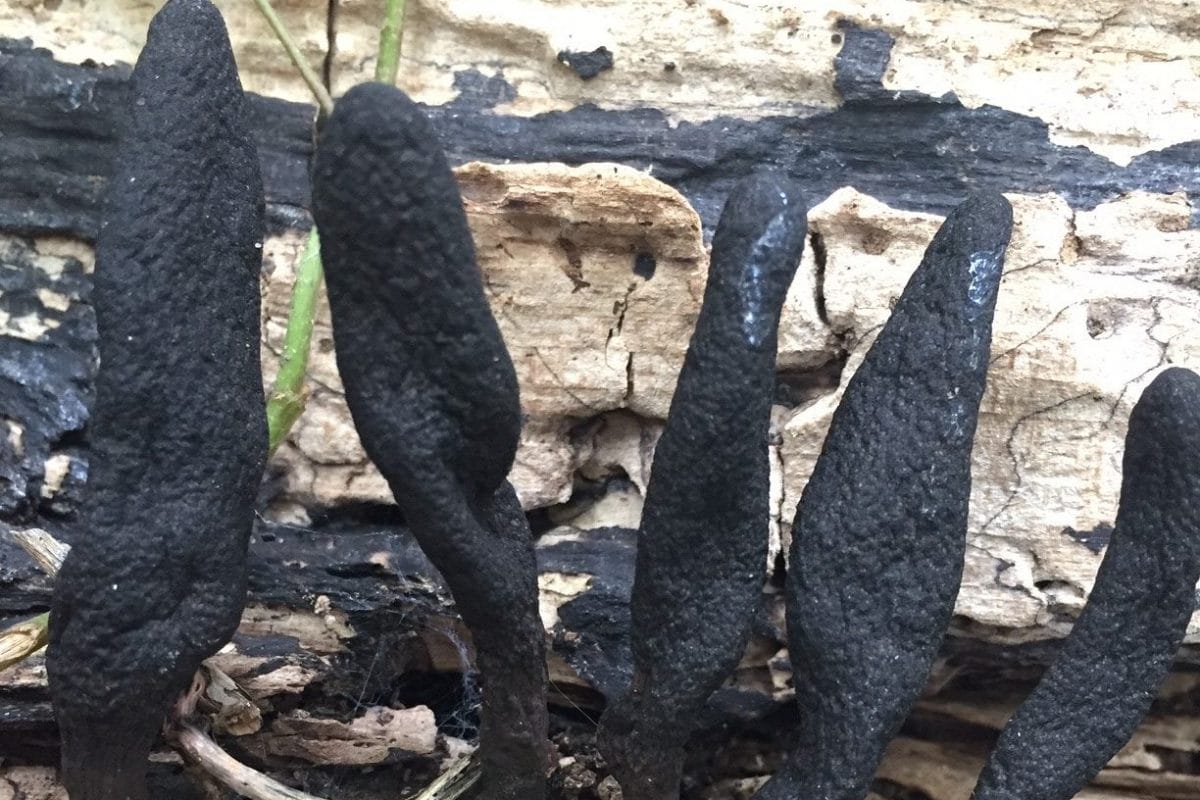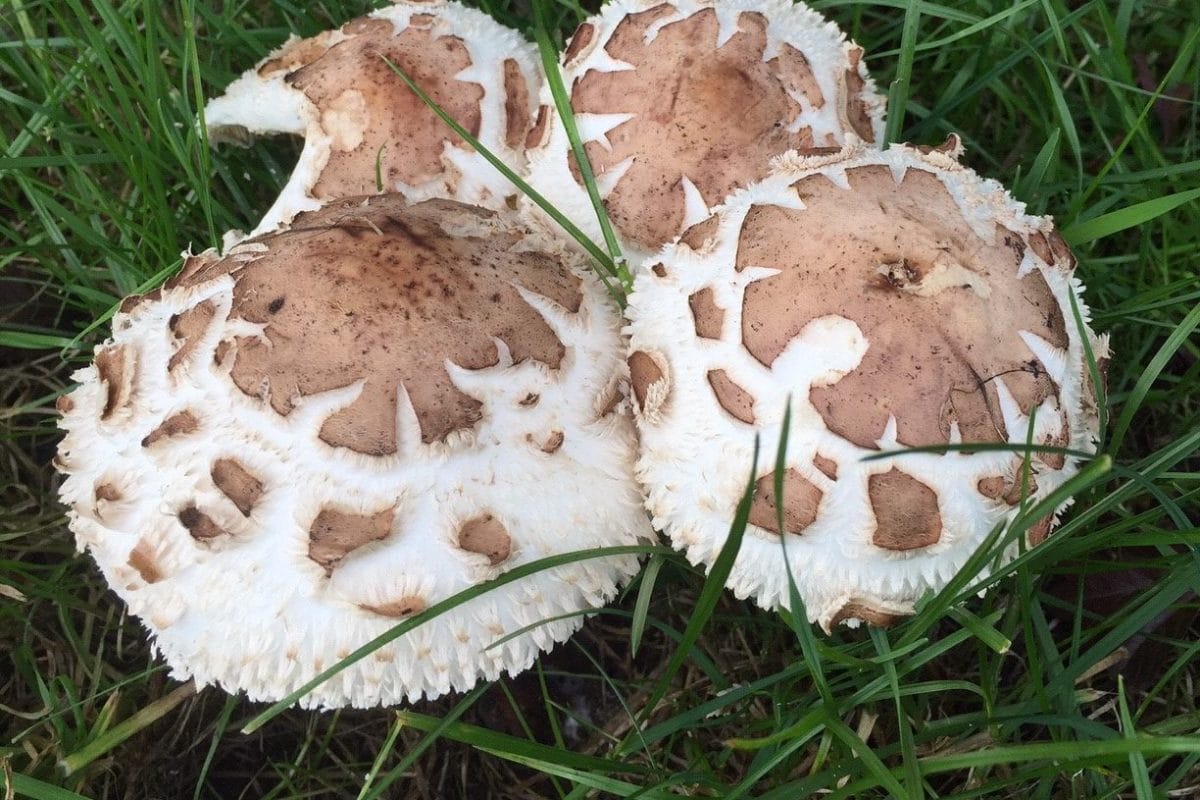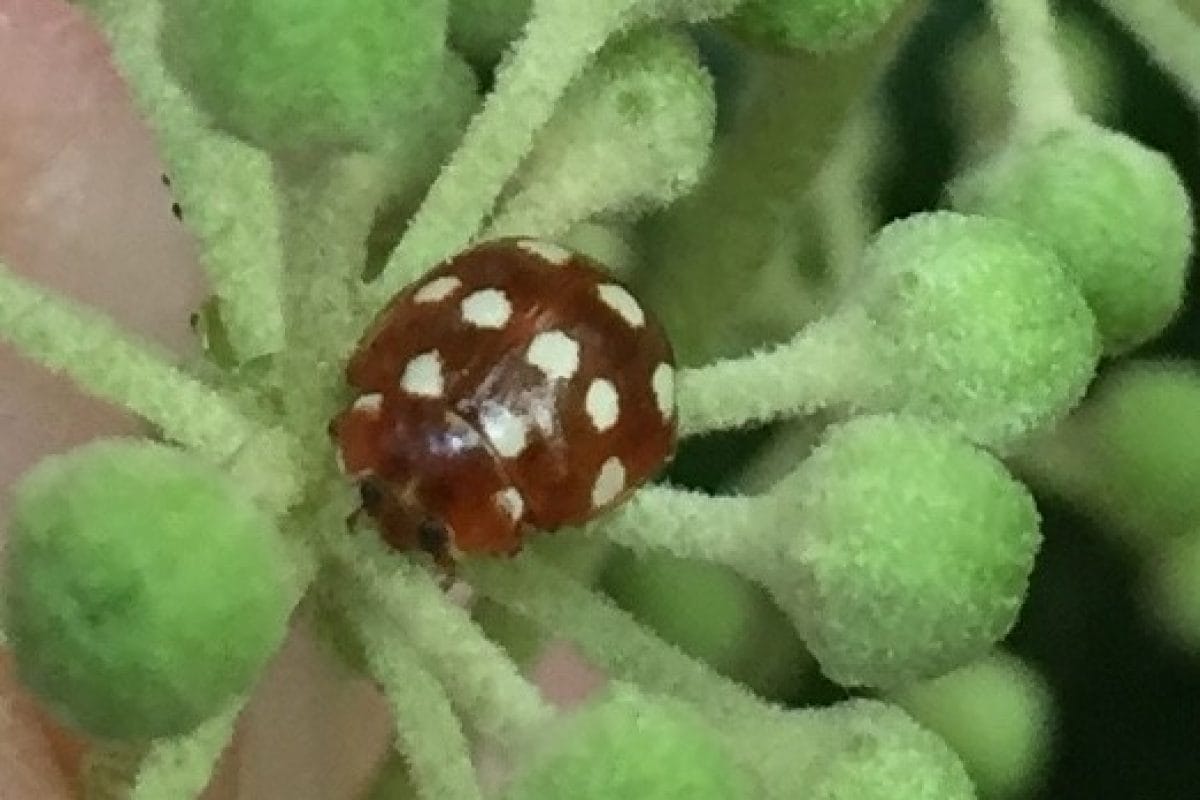We need something a little spooky as the nights draw in, so let me tell you about my latest creepy discovery.
Fungus-y fingers
The other day I found some matt black finger-like projections poking up from a half-decayed and partially buried log. I knew they were one of two fungi, both of which have appropriately sinister names: Dead Man’s Fingers (Xylaria polymorpha) and Dead Moll’s Fingers (Xylaria longipes).
Both are closely related to the Candlesnuff Fungus (Xylaria hypoxylon) who we have met in an earlier blog, and who also emerges from dead wood at this damp time of year.

Both the “dead finger” species are bigger than the Candlesnuff, with projections of about 3-5cm long. In the case of Dead Man’s Fingers, often forming tufts of fingers giving the appearance of a charred, arthritic hand reaching out from a log.
Like the Candlesnuff, they feed not on the cellulose or lignin, which make up the hard substance of wood, but on the polysaccharide binding substances which glue the cellulose and lignin together. Once all the polysaccharides have been digested, all that is left is a pile of soft wood fragments which can be eaten by insects, or further digested by other fungi.
Identification and advice
The books and internet did not help me decide which Xylaria mine was, the pictures of both species looked exactly the same to me. So I decided to do something I don’t often do, which is to use social media.
I posted my photo onto the Facebook page of the London Fungi Group and within a few seconds I had an answer; and not only that, an answer from a very eminent mycologist. I find out that the fingers I found belonged to a dead man not a dead moll. So Xylaria polymorpha it is. I’m told that X. longipes is generally more slender, and more obviously stalked, with a swollen part at the end. The longipes refers to the ‘long feet’ of the fungus aka the stalk.
Just for completeness, there’s a third matt black type of fungus that protrudes from the ground – the Geoglossum fungi, or ‘earth tongues’. They are more of a grassland group of species and wouldn’t be found emerging from dead wood. They also do look (slightly) more like a tongue, with a flattened and curled appearance.
Social media can be a great way to learn about identification. There are lots of good groups. I have joined the London Fungi Group and Bug Spotters on Facebook.

You will get far more helpful replies to your posts if you show you’ve made an effort. For example with a fungus, “Can anyone help me with this one, found at the edge of a path in the Horniman Nature Trail last week, is it a Xylaria?” is better than “Hey guys! What’s this?”
Also, look at the last few posts before posting. A couple of weeks ago many people seemed to be posting pictures of honey bees and asking what they were, whereas if they had just looked at the last few posts they would have seen dozens of photos of their mystery insect with the ID confirmed by a world bee expert.
I have been delighted at the tolerance, patience and friendliness of these groups towards beginners. In few other fields do you have direct access to the opinion of an expert, often within a few minutes.
Follow the fungus
Staying on the fungi theme I have seen far more collared earthstars (Geastrum triplex) this year just near the edge of the path.
And if you want to venture (very slightly) further afield, there are a few nice fungi on the recreation ground across the road from the Trail. These ones are a type of parasol mushroom (Chlorophyllum brunneum).

Lovely ladybirds
As we go down the steps to leave the Nature Trail, admiring the ivy florets which have not quite yet come into full flower, my wife Marion finds something on an ivy flower.
A mahogany-red little fellow with cream spots. We take a few photos. I know it’s a ladybird I haven’t seen before and I know it’s on my Field Studies Council fold-out guide, which I consult when I get home.
It’s a cream spot ladybird, Calvia quatuordecimguttata.

I look up the cream spot ladybird online and it says ‘very abundant, found virtually everywhere.’
It’s always slightly annoying when books or websites say this about something you have never seen before. Cream spot ladybirds are rare and wonderful. Rare and wonderful to me, anyway.
They are slightly smaller than the very common Harlequin ladybird (Harmonia axyridis). They like deciduous woodland and are predatory, feeding on aphids and other small, soft insects.
Insects are very hard to identify, but ladybirds are an excellent place to start. They are bright, shiny and there are many that are quite distinctive. They stay more still than butterflies and the Field Studies Council fold-out guide (there is one for ladybird larvae too) will identify nearly all the ones you are likely to see.
Also, there is an excellent one-hour talk on ladybird ID by Helen Roy and Peter Brown, the UK’s ladybird experts, freely available on YouTube. The only tips I’d give for ladybird watching is to keep looking closely at the greenery on the sides of the path, and remember many species are rather smaller than you think they are going to be.
[Jo Hatton, Principle Curator of Natural Sciences at the Honriman, also recommends the iRecord Ladybirds mobile app, which enables people to contribute more easily to the UK Ladybird Survey.]
So there’s a little winter project for you, learn your ladybirds and you will be ahead of the game when they are out and about again next spring!
Take care, and enjoy the Nature Trail.
Main image: Paffka via wikicommons CC BY-SA 3.0


